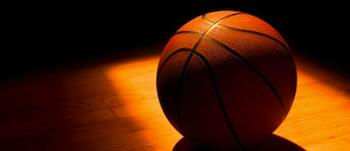- MENU
- HOME
- SEARCH
- WORLD
- MAIN
- AFRICA
- ASIA
- BALKANS
- EUROPE
- LATIN AMERICA
- MIDDLE EAST
- United Kingdom
- United States
- Argentina
- Australia
- Austria
- Benelux
- Brazil
- Canada
- China
- France
- Germany
- Greece
- Hungary
- India
- Indonesia
- Ireland
- Israel
- Italy
- Japan
- Korea
- Mexico
- New Zealand
- Pakistan
- Philippines
- Poland
- Russia
- South Africa
- Spain
- Taiwan
- Turkey
- USA
- BUSINESS
- WEALTH
- STOCKS
- TECH
- HEALTH
- LIFESTYLE
- ENTERTAINMENT
- SPORTS
- RSS
- iHaveNet.com
By Brian Burnsed

While college basketball players graduate at a higher rate than nonathletes, the NAACP and the Department of Education argue that universities are leaving some of their student-athletes behind.
Their concern arises from the expanding fissure between graduation rates of white and African-American college basketball players.
According to a study of basketball players' graduation rates from 1999 to 2003 recently released by the Institute for Diversity and Ethics in Sport at the University of Central Florida , 79 percent of the teams in this year's men's NCAA Tournament graduated at least 70 percent of their white athletes, while only 31 percent of the teams in the field graduated at least 70 percent of their African-American players.
Secretary of Education Arne Duncan, a former college basketball player, says, "I grew up with too many players who played on successful teams who no one frankly cared about their educational well-being. And when their playing careers were done, they struggled."
Seventeen teams in this year's men's tournament had a 50 percent or greater disparity between graduation rates of white and African-American players. In fact, only three schools in the tournament -- Texas A&M University , the University of Washington , and Oakland University -- graduated African-American players at a higher rate than whites.
Leaders in the African-American community like Benjamin Jealous, president and CEO of the NAACP, claim that such figures highlight the need for action on the part of the NCAA and university officials. "We as a country can not afford to sit on the sidelines while some of our colleges are graduating less than 40 percent of players, and some schools are finding a way to graduate 100 percent of one group and less than 20 percent of another," he says.
To help bridge this gap, Duncan suggests that schools that cannot graduate at least 40 percent of their student-athletes be banned from postseason play. If the rule was applied to this year's tournament, 12 of the 65 teams would be locked out of the tournament. Three of them are No. 6 seeds or better -- the University of Tennessee , the University of Maryland , and the University of Kentucky . "If you can't manage to graduate two out of five players, how serious are the institutions and the colleges about the players' academic success?" Duncan asks. "How are they preparing student-athletes for life?"
Collectively, white Division I basketball players graduate at a 28 percent higher rate than their African-American counterparts, which is an increase of 4 percentage points from the previous year. The gap narrowed by 4 percentage points for female basketball players, falling to a 12 percent difference. Richard Lapchick, director of the Institute for Diversity and Ethics in Sport, notes that the gap is smaller for female players because the option of playing professionally hasn't been available to them as long as it has for men. "Women have been trained historically more to balance academics and athletics," he says. "[The perception among] African-American young men is that sports may be a way out, an illusion that [is dispelled by] the fact that it's actually easier for an African-American basketball player in high school to become a doctor or attorney than it is for them to make it to the NBA."
Duncan lauds the late Myles Brand, former president of the NCAA, for the efforts he made when the NCAA implemented the Academic Progress Rate program in 2005, which holds schools accountable for poor graduation rates by pulling scholarships from programs with subpar graduation figures. While the APR rules have started to push graduation rates higher for college athletes, the secretary of education feels more could be done. "The progress is not enough," Duncan says. "We're proposing that the NCAA raise the standard, raise the bar."
Copyright © U.S. News & World Report
NCAA Men's Basketball Graduation Rate Disparity Between Races Grows